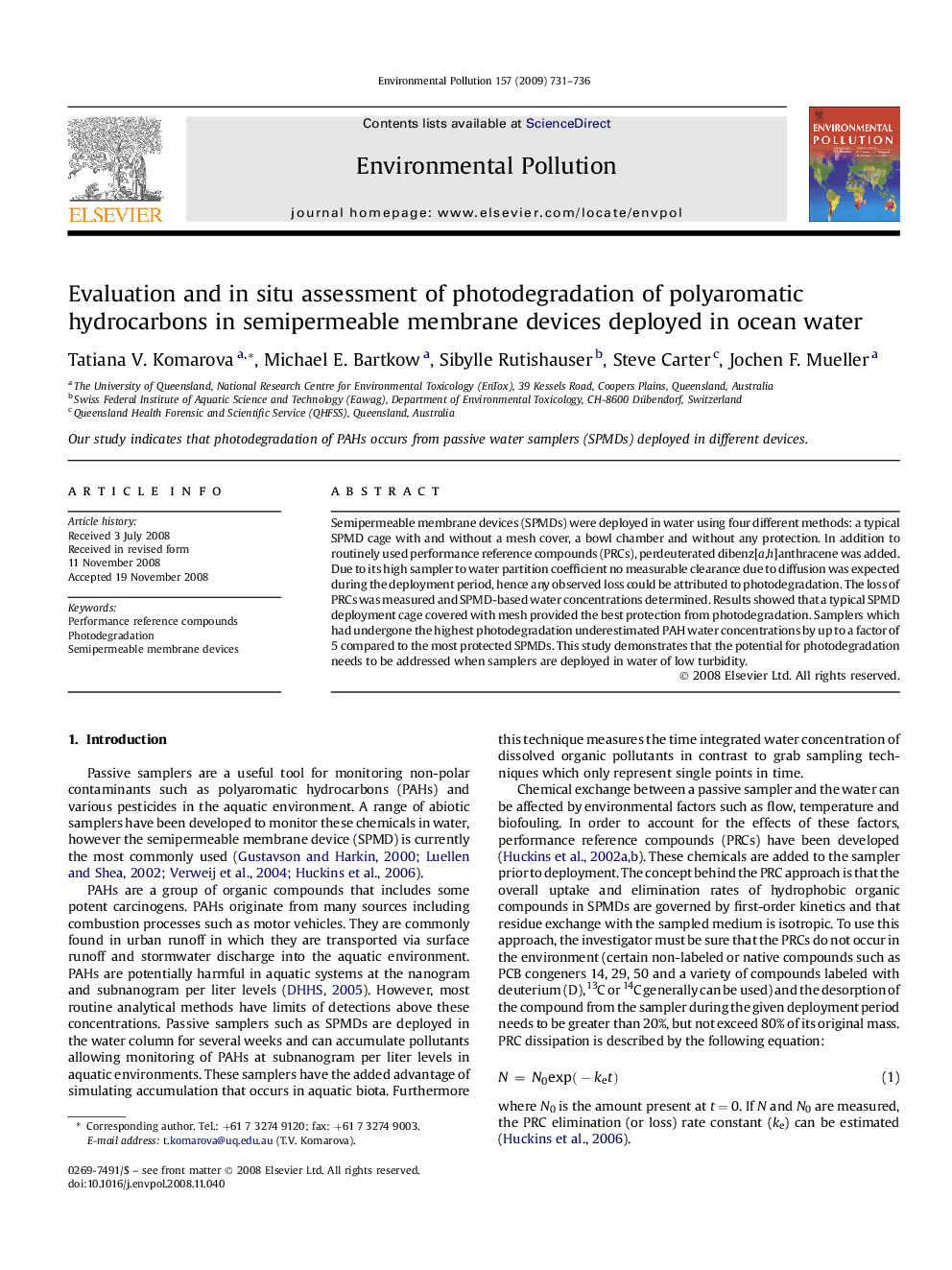| Article ID | Journal | Published Year | Pages | File Type |
|---|---|---|---|---|
| 4426578 | Environmental Pollution | 2009 | 6 Pages |
Semipermeable membrane devices (SPMDs) were deployed in water using four different methods: a typical SPMD cage with and without a mesh cover, a bowl chamber and without any protection. In addition to routinely used performance reference compounds (PRCs), perdeuterated dibenz[a,h]anthracene was added. Due to its high sampler to water partition coefficient no measurable clearance due to diffusion was expected during the deployment period, hence any observed loss could be attributed to photodegradation. The loss of PRCs was measured and SPMD-based water concentrations determined. Results showed that a typical SPMD deployment cage covered with mesh provided the best protection from photodegradation. Samplers which had undergone the highest photodegradation underestimated PAH water concentrations by up to a factor of 5 compared to the most protected SPMDs. This study demonstrates that the potential for photodegradation needs to be addressed when samplers are deployed in water of low turbidity.
